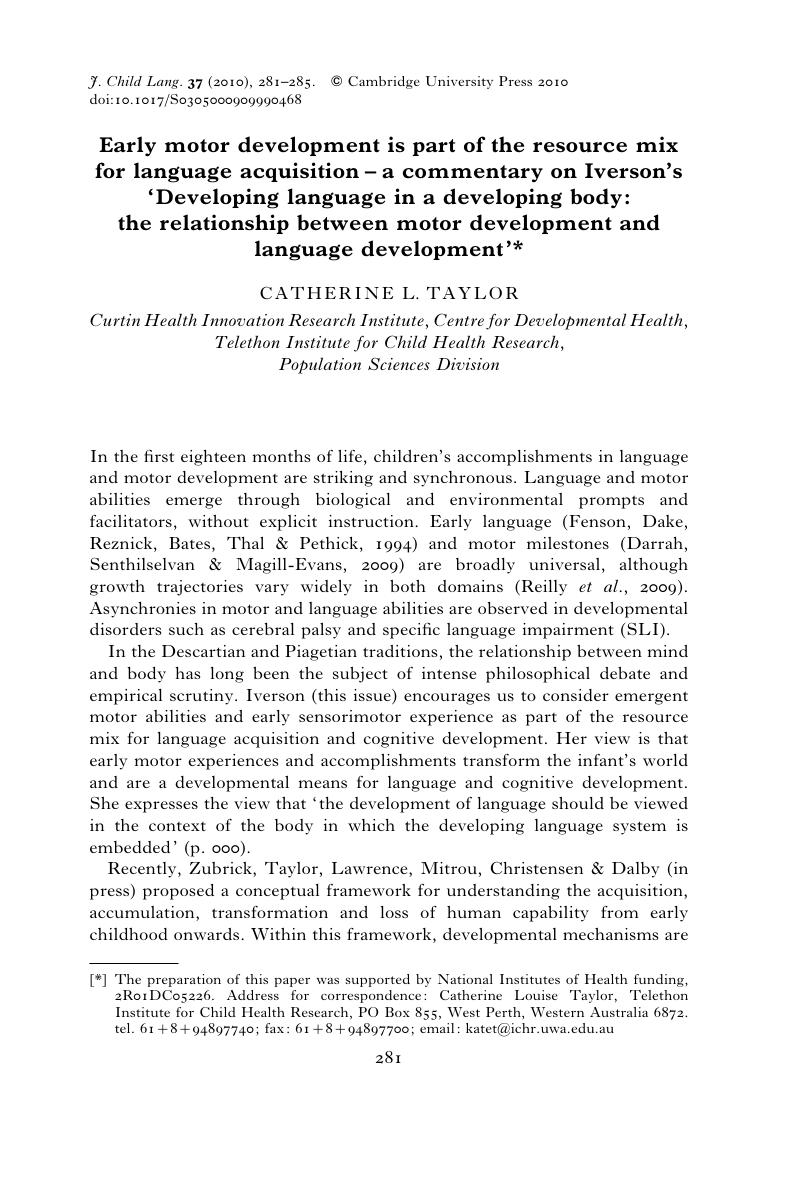Crossref Citations
This article has been cited by the following publications. This list is generated based on data provided by Crossref.
Farrant, Brad M
and
Zubrick, Stephen R
2012.
Early vocabulary development: The importance of joint attention and parent-child book reading.
First Language,
Vol. 32,
Issue. 3,
p.
343.
Colus, Katia Miguel
and
Amorim, Katia de Souza
2019.
O Estabelecimento da Atenção Conjunta em um Bebê com Deficiência Visual Severa.
Psicologia: Teoria e Pesquisa,
Vol. 35,
Issue. ,





